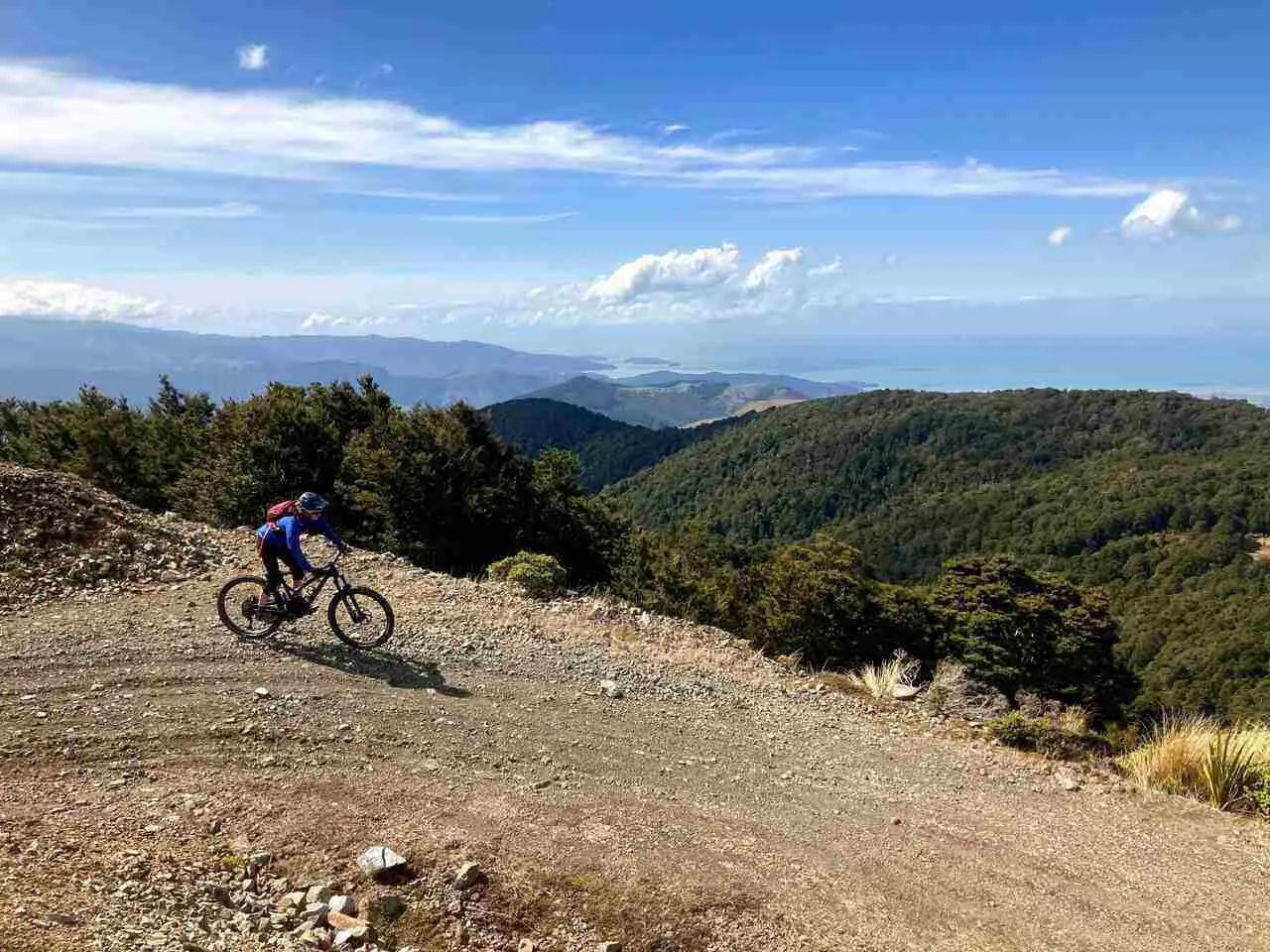This Race Face Ambush Knee Pad review will look into whether these knee pads are suitable for you and what you ride.
As mountain bikes have developed towards longer travel and more aggressive geometries, protective gear has had to advance. Not only to become more protective but to also be lighter, more breathable in order to pedal in.
Race Face has been around since 1993 creating high end, top-quality, protective gear for mountain bikers. We have tried and tested in the Race Face Ambush over several months, many different types of rides and terrains, to bring you this Race Face Ambush knee pad review.
The Race Face Ambush knee guard is aimed at trail and enduro riders. It is for those who want something protective, yet comfortable to pedal in. It doesn’t quite reach our expectations for downhill riders. For downhill, we would expect some kind of hard plastic outer shell for the faster, harder knocks to the knee.
What makes a good set of knee pads?
A good set of mountain bike knee pads depend on what kind of terrain you ride- but we have simplified this below! One thing that is common between any kind of knee pad is quality. You will pay more for quality, but you will get far more life out of your pads if they don’t rip after the first few crashes!
Protective
Having more protection doesn’t necessarily make knee pads better. It makes it better if you are a downhill rider who needs a large amount of protection. But if you are a trail rider or beginner (on not too gnarly terrain) you won’t need bulky, plastic knee guards.
You pay more for high-performance shock absorption technologies, such as D3O and G-Force, over standard foam and plastics. We highly recommend the likes of these materials as they provide protection without the bulk! The technology is also flexible, breathable and lightweight, making a far more comfortable set of knee pads.
Pedal-able
Pedability may not be a real word, but how comfortable the knee pads are to pedal in is crucial if you pedal while wearing knee pads. Having a plank of plastic attached to your knees that your knees hit every pedal isn’t comfortable! You want something flexible, or with a curved fit, so you can bend your knee without smacking the guards!
Some people never pedal in their pads. Either they get shuttled or take a chairlift to the top, and require no pedaling between trails, or they wear them about their calves until needed. In this case, pedal-ability isn’t so crucial. But I tend to find I do need to pedal sections of track – either to climb a quick hill between trails, or when needing to get a bit of speed.
Durability
When looking for a long-lasting pair of knee guards, I tend to go with ones that have velcro straps. Ones that are held up by elastics have a tendency to stretch out of place or tear in the section above the knee, below the strap.
Thin, mesh material on the back of the knee doesn’t tend to last long either. If they get caught on a pedal accidentally, or on the ground during a crash, they tear very easily!
Race Face Ambush Knee Pad Review
What’s good?
- Highly Protective
- D3O Technology
- Durable
- Don’t move around
- Plenty of adjustability
What’s not?
- So much velcro!
- Can’t be machine washed
- Warm
From the moment I picked up these pads, I could feel these were a durable, protective set of pads! I have been testing these on the Nelson trails in New Zealand, which are well known for their long climbs and steep, technical descents. The Race Face Ambush pads were exactly what I needed for descending on rocky, rooty features.
The pads have a decent range of adjustability. There are two sets of velcro straps at the top and bottom of the pads. One set of straps gets the pads into a rough shape to fit around your leg, and undoes completely so you can take them off or put them on without taking your shoes off (great advantage!). The other set of straps allows you to tighten or loosen the pads once they are on.
This is a pretty handy feature you don’t see on too many pads, especially if you like to fully take off your pads while out on the trails (to chuck them in a backpack for the climb etc). However, it does make for a lot of velcro straps which can be fiddly and somewhat uncomfortable if you don’t get it right.
Fit
The velcro straps provide a large range of adjustability around the thigh and calf. I enjoy having the ability to loosen the strap for a quick climb, and then tighten them for a descent.
For reference, I have a size medium and my thigh is 18 inches (48 cm), and my calf is 13.5 inches (34 cm). The medium fit for me is slightly on the small side. This is surprising as I am generally a small medium fit.
The length of pads is great, preventing the ‘rookie gap’ between the shorts and pads from making an appearance.
When I don’t need the pads, I keep them around my shins/calves. The velcro allows me to tighten them to keep them in place and they don’t move around. Or, for longer climbs, I wrap them around my handle bars, which is secure and far less sweaty!
Protection
To bring you a proper review, I obviously had to take a couple of crashes (you’re welcome!).
My first crash in these was a slide across the dirt. The knee pads stayed up, whereas I would have expected pads held up by elastic to have slid down. The Ambush barely even moved.
The second crash was a knock straight to the knee. The ambush knee pads took the brunt of the force, as well as a bit of dirt, but I didn’t feel a thing (on my knees that is, the hands and hips did!).
The pads are constructed of D3O technology. This allows the pads to be flexible and relatively thin but provides protection on impact. It won’t protect as well as a hard plastic outer shell (such as on the Fox Launch Pro), but you do get a pretty reasonable level of protection- with the convenience of it being light and compact.
The pad itself covers the main part of the knee, and partway down the shin. This keeps you pretty well protected in the instance of a pedal strike or a knock to the upper shin.
And, as a bit of a bonus, the sides of the pads have foam padding. Knocks to the side of the knee can be particularly dangerous, so having a bit of protection here can do wonders.
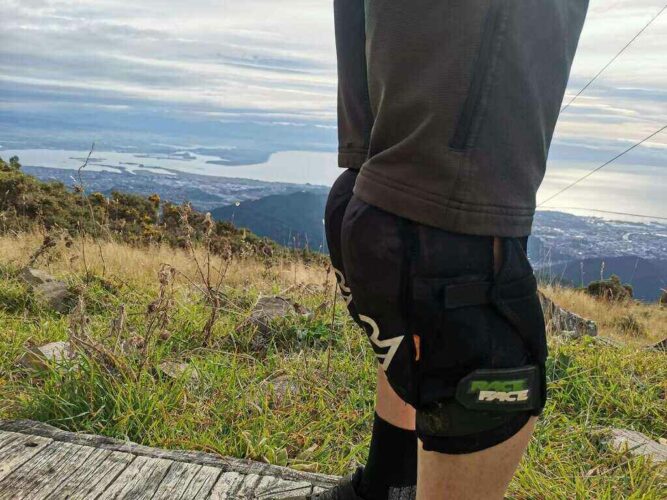
There were a few more crashes, but sparing the details- my knee is still in good condition!
Ventilation
The pads are bulky, so they are never going to be as well ventilated as the likes of the Fox Enduro Pro knee sleeve or the Leatt Airflex Hybrid.
However, they have tried. The perforated neoprene allows a bit of airflow through the material. As does the open back construction (hole at the back of the knee).
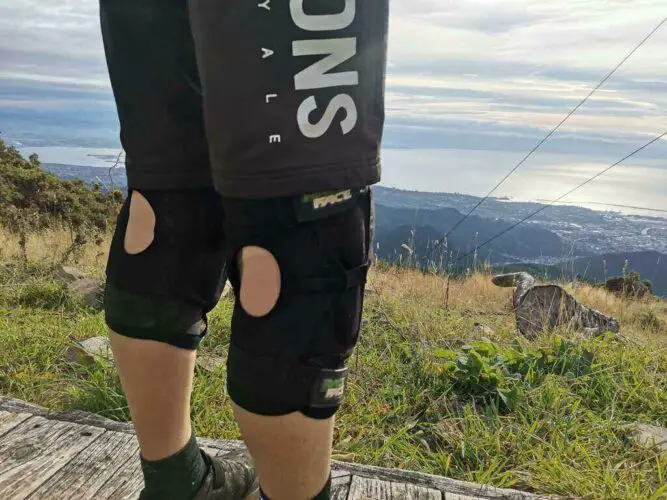
For me, having a protective set of pads is more essential than ventilation, especially as you don’t notice it on the descent. I manage the lack of ventilation by keeping the pads around my shins for climbs and longer pedaling sections.
They are easy enough to pull down around the calves after a lap while still on the bike and it only takes a minute or two to stop and slide them back up when needed.
Durability
After riding in these for a few months, I don’t have any concerns about the longevity of these pads. They have handled crashes well and certainly haven’t stretched out of place.
Pedal strikes to the back of the leg haven’t even left a mark on the pads, which would usually result in the downfall of thinner material pads!
Additionally, the velcro is still strong and hasn’t lost any of its ‘stick’.
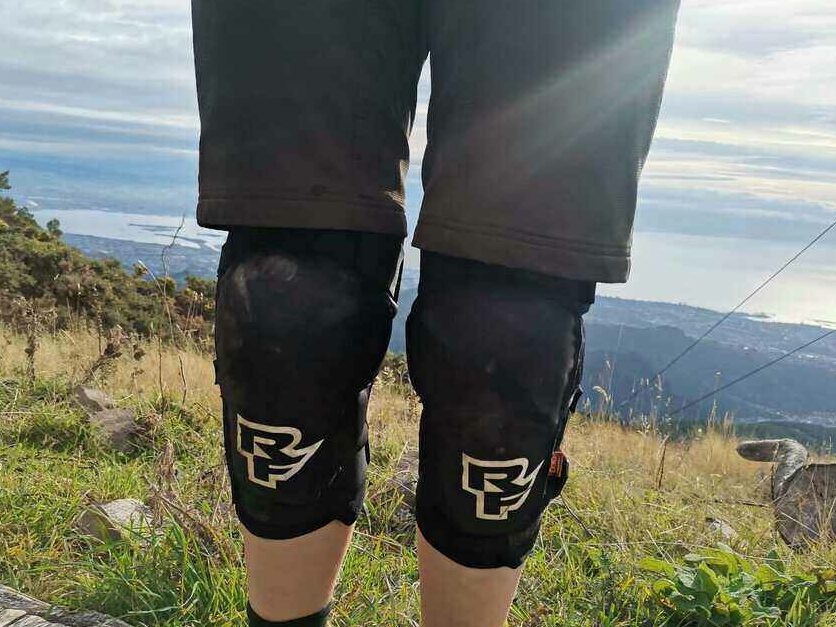
Value and Comparisons
While these are not the cheapest knee pads on the market, they also are not the most expensive either. Considering you get a super protective knee guard, but don’t compensate on ventilation or weight
The Fox Launch D3O is a pretty comparable pad in terms of protection and pedal friendliness. The advantage of the Ambush is that they are a bit lighter, and a bit more flexible. The Launch D3O has a pre-curved ergonomic fit that meant they were slightly harder to store in a backpack, or around your shins while riding. However, the Launch D3O’s can generally be found a bit cheaper.
Another similar set of pads is the IXS Carve EVO+. These have an equivalent material to D3O, and velcro straps at the top and base of the knee sleeve. The Carve EVO+ doesn’t quite feel as protective as the Ambush, and the padding is a touch more minimalist on the sides of the knees. The advantage though is that you can take the pads out in order to wash the rest of the knee sleeve. The Ambush and Carve EVO+ are generally found around the same price.
Final Thoughts
The bottom line is I enjoy riding in the Race Face Ambush knee pads. And my knees have survived many crashes on unforgiving terrain.
I don’t like how much velcro there is, but I can appreciate that the extra velcro means I can put the pads on and off without taking my shoes off.
They are a pretty warm set of pads, so I don’t tend to peddle in them, even for relatively short climbs. But it is easy enough to slide them down around the shins for climbs.
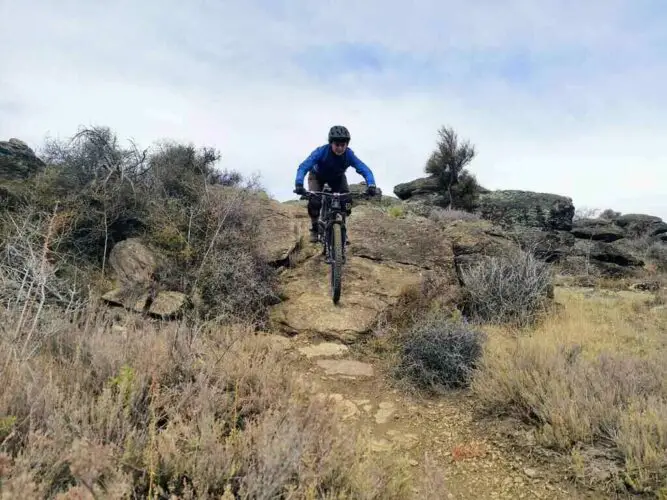
If you enjoyed this Race Face Ambush knee pad review, I would also recommend checking out the Fox Launch D3O knee pad review if you are considering a protective trail/enduro set.
